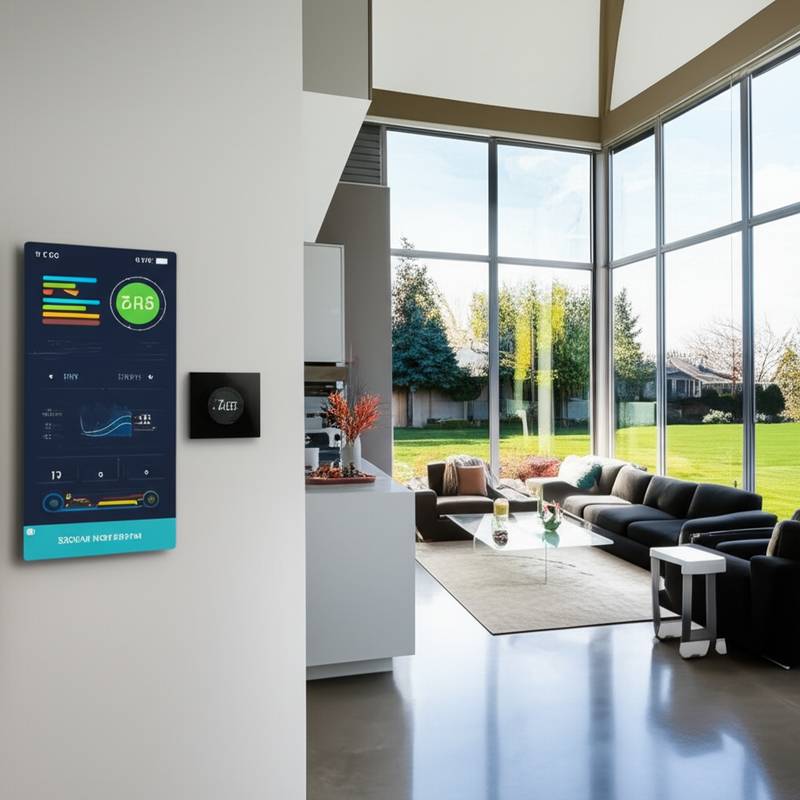Solar Smart Homes Run Without the Grid in 2025
In 2025, advancements in solar technology enable homeowners to achieve true energy independence. Off-grid solar smart homes integrate renewable power sources with intelligent systems, eliminating reliance on traditional utility grids. These setups provide reliable electricity, reduce costs, and enhance environmental sustainability for everyday living.
Homeowners gain control over their energy consumption through seamless automation. Systems monitor usage in real time and adjust output accordingly. This approach ensures comfort without compromise, even during peak demand or adverse weather.
Understanding Off-Grid Solar Smart Homes
Off-grid solar smart homes operate independently from public power networks. They harness sunlight to generate electricity, store excess energy, and distribute it efficiently throughout the property. This model suits remote locations or areas prone to outages, offering uninterrupted service.
Core principles revolve around self-sufficiency and efficiency. Solar panels capture energy, while batteries preserve it for later use. Smart controls optimize distribution, preventing waste and maximizing output.
Such homes appeal to environmentally conscious individuals seeking long-term stability. By decoupling from the grid, residents avoid fluctuating utility rates and contribute to reduced carbon emissions. The technology matures rapidly, making adoption feasible for average households.
Essential Components for Energy Independence
Solar panels form the foundation of any off-grid system. High-efficiency monocrystalline panels convert sunlight into usable electricity with minimal space requirements. In 2025, flexible and lightweight options integrate easily into rooftops or ground mounts.
Battery storage solutions, such as lithium-ion units, hold surplus power for nighttime or cloudy days. Advanced models feature modular designs that scale with household needs. They maintain charge over extended periods, ensuring consistent availability.
Inverters transform direct current from panels into alternating current for home appliances. Microinverters attach to individual panels, boosting overall performance by mitigating shading effects. This setup enhances reliability in varied conditions.
Smart energy management systems tie everything together. These platforms use sensors and algorithms to track consumption patterns. They automate adjustments, like prioritizing essential loads during low-generation periods.
- Energy monitors: Track real-time usage and alert to inefficiencies.
- Automated switches: Redirect power to critical devices first.
- App integrations: Allow remote control via mobile devices.
Benefits of Adopting Off-Grid Living
Energy independence shields homeowners from grid disruptions caused by storms or maintenance. Systems continue functioning autonomously, powering lights, heating, and electronics without interruption. This resilience proves invaluable in uncertain climates.
Financial savings accumulate over time. Initial investments offset through eliminated electricity bills and potential incentives. Payback periods shorten to five years or less with efficient designs and rising energy costs.
Sustainability drives another key advantage. Solar homes produce clean energy, lowering household carbon footprints significantly. They support broader goals of renewable adoption, fostering a greener future.
Health and comfort improve in smart configurations. Automated ventilation and temperature controls maintain optimal indoor environments. Integration with security systems adds layers of protection, all powered reliably.
Steps to Build Your Off-Grid Solar Smart Home
Assess your energy requirements before purchasing components. Calculate daily consumption by reviewing appliance ratings and usage hours. Factor in future additions, like electric vehicles, to size the system appropriately.
Select high-quality solar panels and batteries suited to your location. Consider sunlight exposure and climate when choosing capacities. Consult local regulations to ensure compliance with installation standards.
Professional installation ensures safety and efficiency. Certified technicians mount panels securely and wire the system correctly. They configure inverters and batteries to work in harmony.
Integrate smart home devices for enhanced control. Connect thermostats, lights, and appliances to the central management hub. Test the setup thoroughly to verify seamless operation.
- Conduct a site survey for optimal panel placement.
- Install batteries in a cool, ventilated area.
- Program automation rules based on lifestyle patterns.
- Monitor performance for the first month and adjust as needed.
Maintenance involves periodic checks on panels for debris and connections for corrosion. Clean components seasonally to sustain efficiency. Software updates keep smart features current and secure.
Optimizing Performance in Daily Use
Daily habits influence system effectiveness. Prioritize energy-intensive tasks during peak sunlight hours. Use timers on devices to align with generation cycles.
Smart apps provide insights into usage trends. Review data weekly to identify savings opportunities, such as upgrading inefficient appliances. These tools empower informed decisions for ongoing improvements.
Incorporate backup generators for rare extended low-sun periods. Hybrid systems blend solar with minimal fossil fuel use, bridging gaps without full grid dependence. This hybrid approach balances reliability and sustainability.
Scenarios of Success in 2025
Consider a family in a rural setting installing a 10-kilowatt solar array. Paired with 20-kilowatt-hour batteries, the system powers a three-bedroom home year-round. Smart controls reduce consumption by 30 percent through automated shading and lighting.
Urban dwellers retrofit apartments with balcony panels and compact storage. Microinverters enable plug-and-play setups, feeding excess power back to shared batteries. Residents enjoy lower bills and community-wide resilience.
Remote workers in off-grid cabins benefit from integrated workstations. Solar setups charge laptops and run servers without interruption. Automation handles heating, allowing focus on productivity.
These examples illustrate adaptability across lifestyles. Scalable technology meets diverse needs, from minimalists to tech enthusiasts.
Securing Long-Term Value and Comfort
Investing in an off-grid solar smart home yields enduring returns. Systems appreciate in value as energy prices rise and technology advances. Home resale potential increases with proven self-sufficiency features.
Comfort extends beyond basics to lifestyle enhancements. Voice-activated controls manage ambiance effortlessly. Integration with wellness devices promotes healthier routines, all under solar power.
Sustainability benefits ripple outward. Communities adopting similar systems reduce collective grid strain. Individual actions contribute to global renewable shifts, inspiring broader change.
Embrace this path to reclaim control over your energy future. With thoughtful planning, off-grid living delivers security, savings, and satisfaction in 2025 and beyond.
